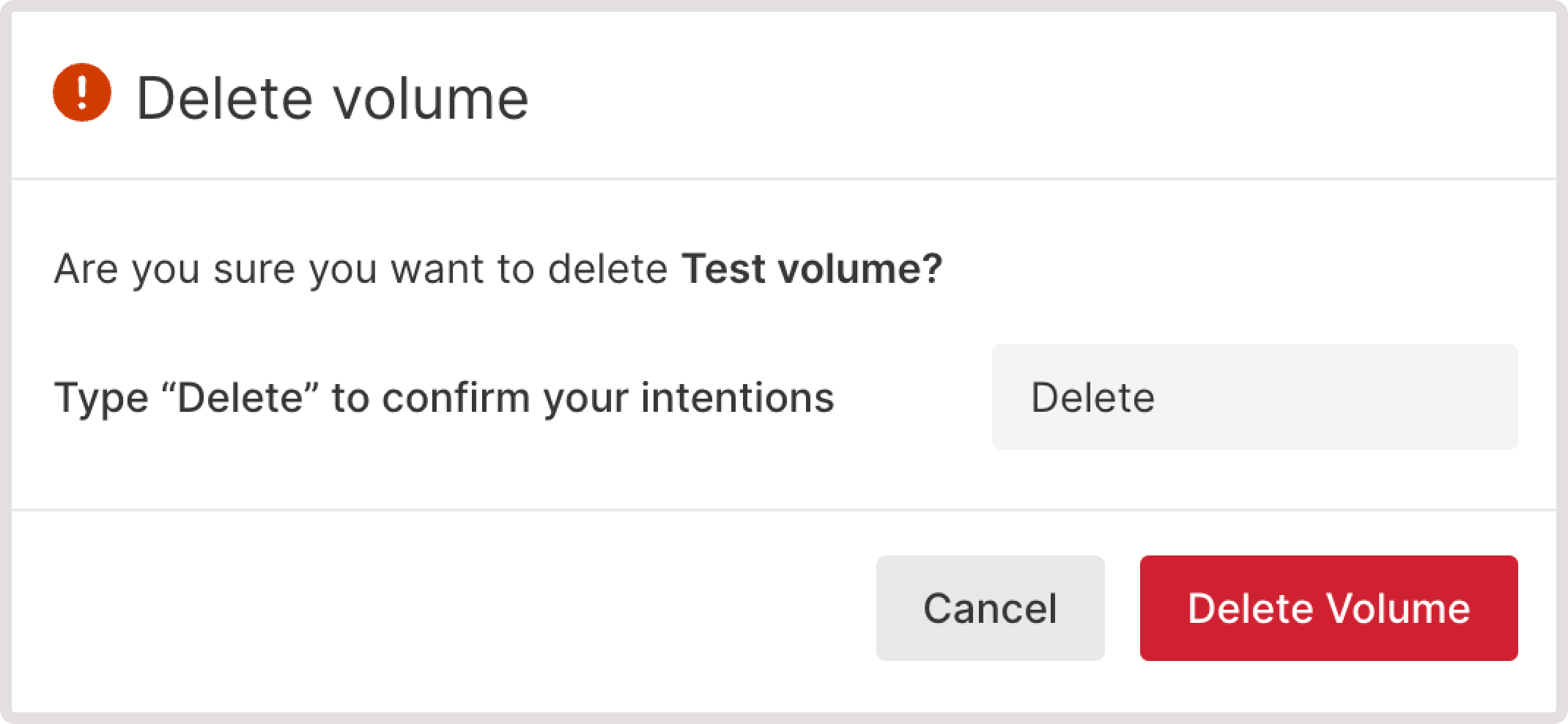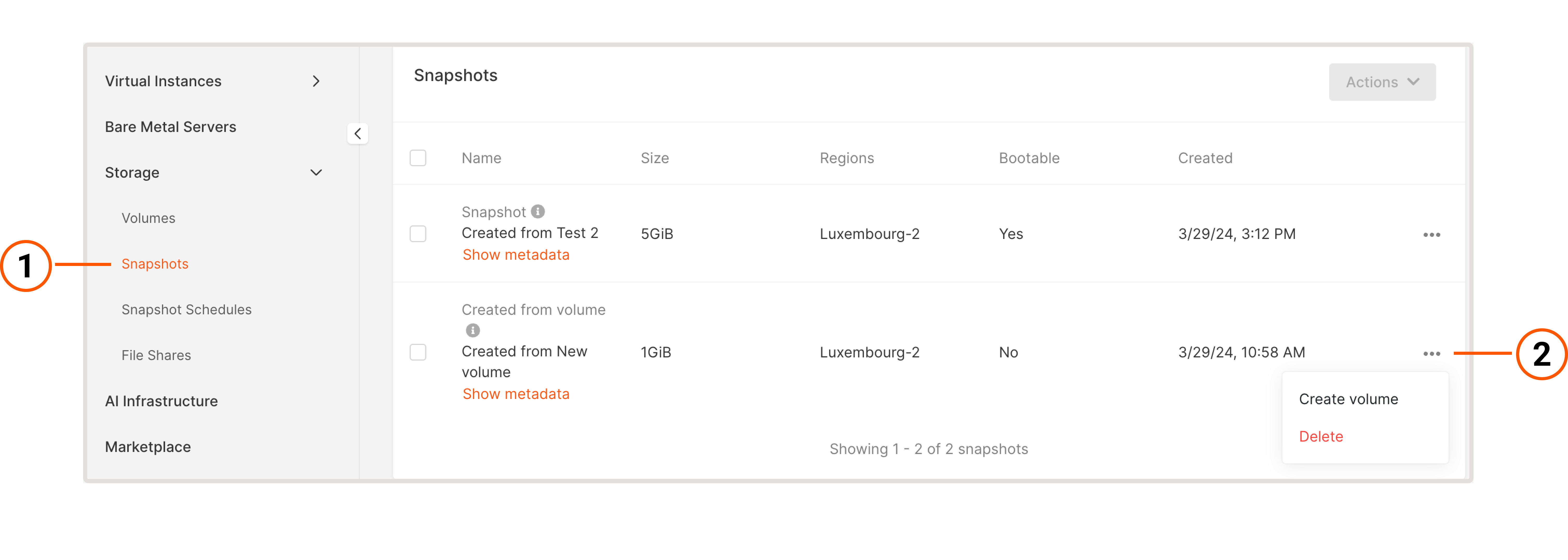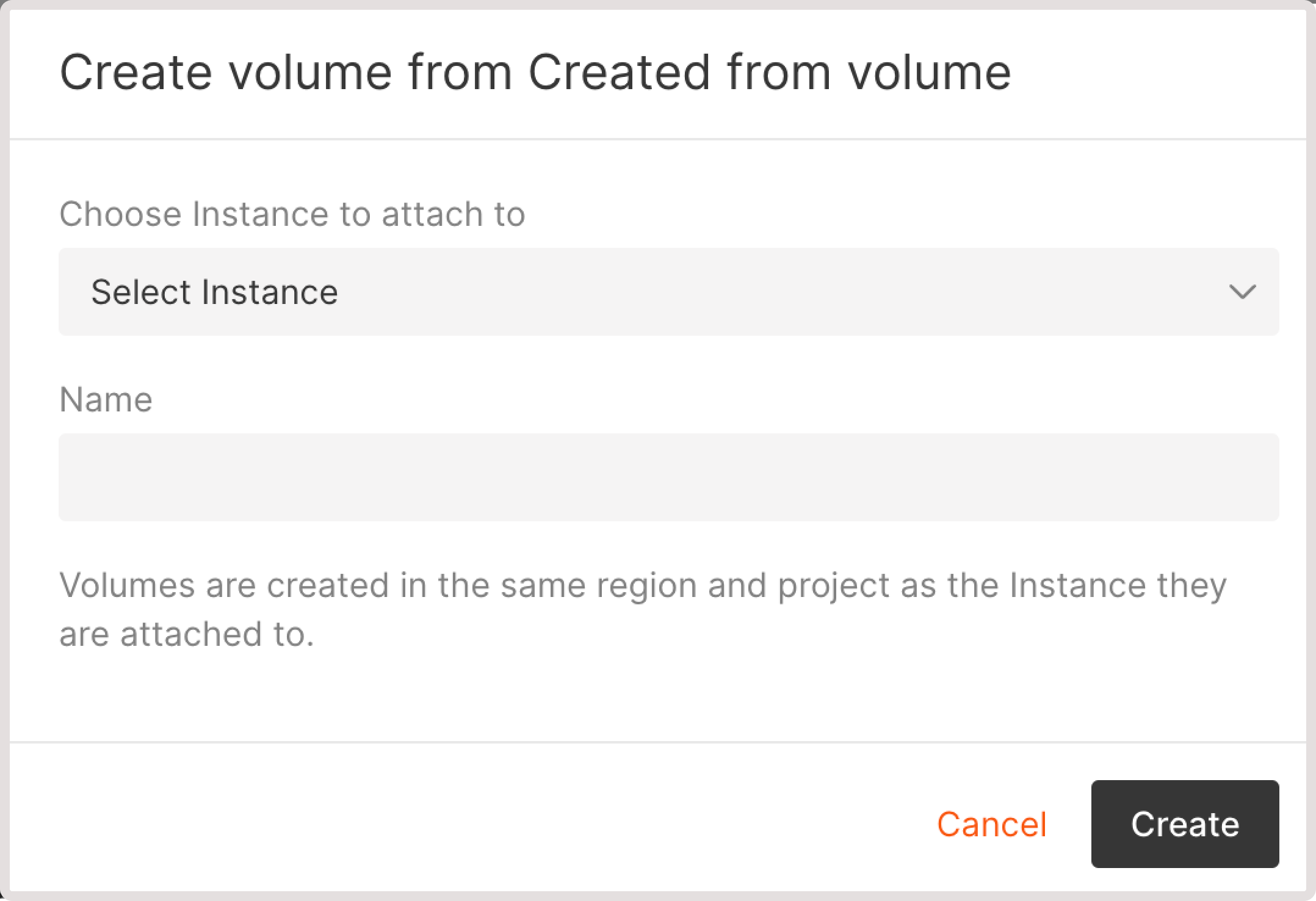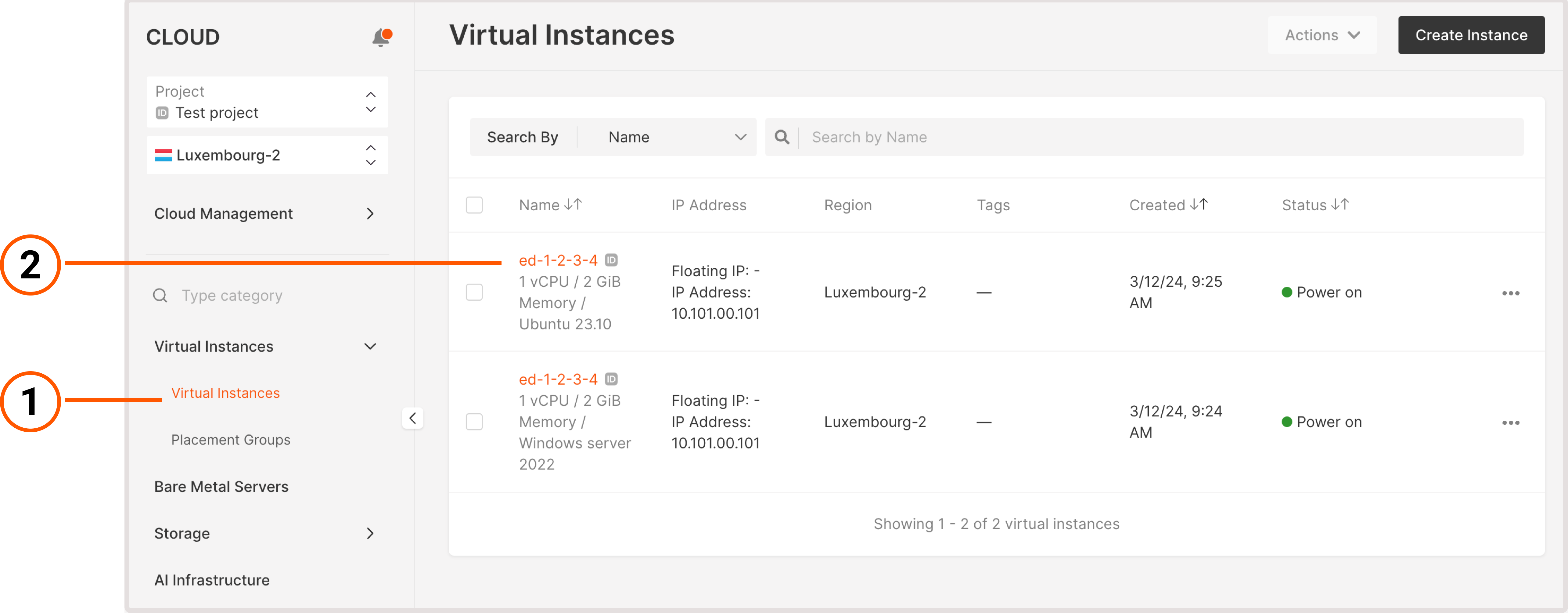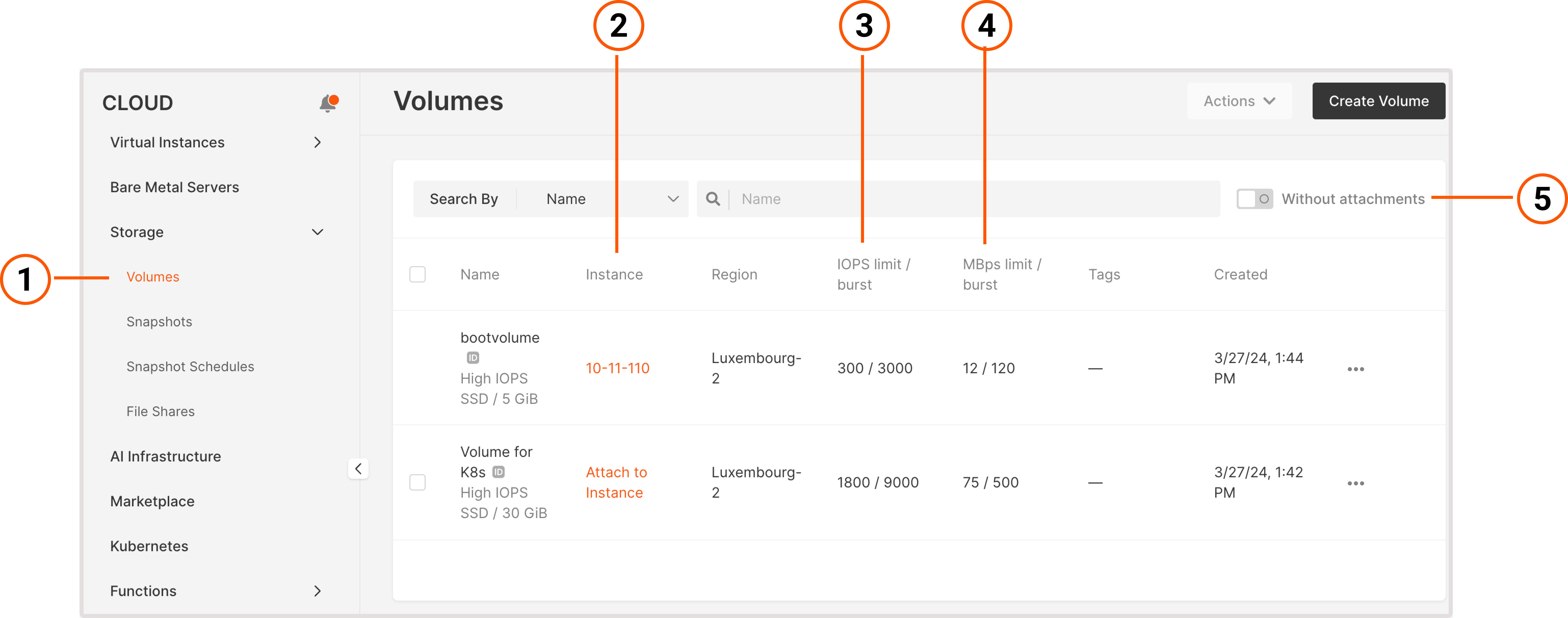
Create a volume
You can create volumes in several ways: when creating a Virtual Machine, from the Volumes page, or from a snapshot. The latter two approaches are described in the following sections.InfoYou can only use a volume in the same region where a Virtual Machine is created.
- From the Volumes page
- From a volume snapshot
1. In the Gcore Customer Portal, navigate to Cloud > Storage.2. Click Create volume.



Attach volumes to an existing Virtual Machine
If a volume is attached to a Virtual Machine, you’ll see the VM name on the Volumes page in the Instance column. Otherwise, you’ll see the “Attach to instance” link. You can attach more than one volume to a Virtual Machine. However, volumes can only be used in the same region where the VM is created. You can attach volumes to a Virtual Machine either from the Volumes page or from the VM settings.- From the Volumes page
- From Virtual Machine settings
1. In the Gcore Customer Portal, navigate to Cloud > Storage.2. Find the volume that you want to attach and click Attach to instance.
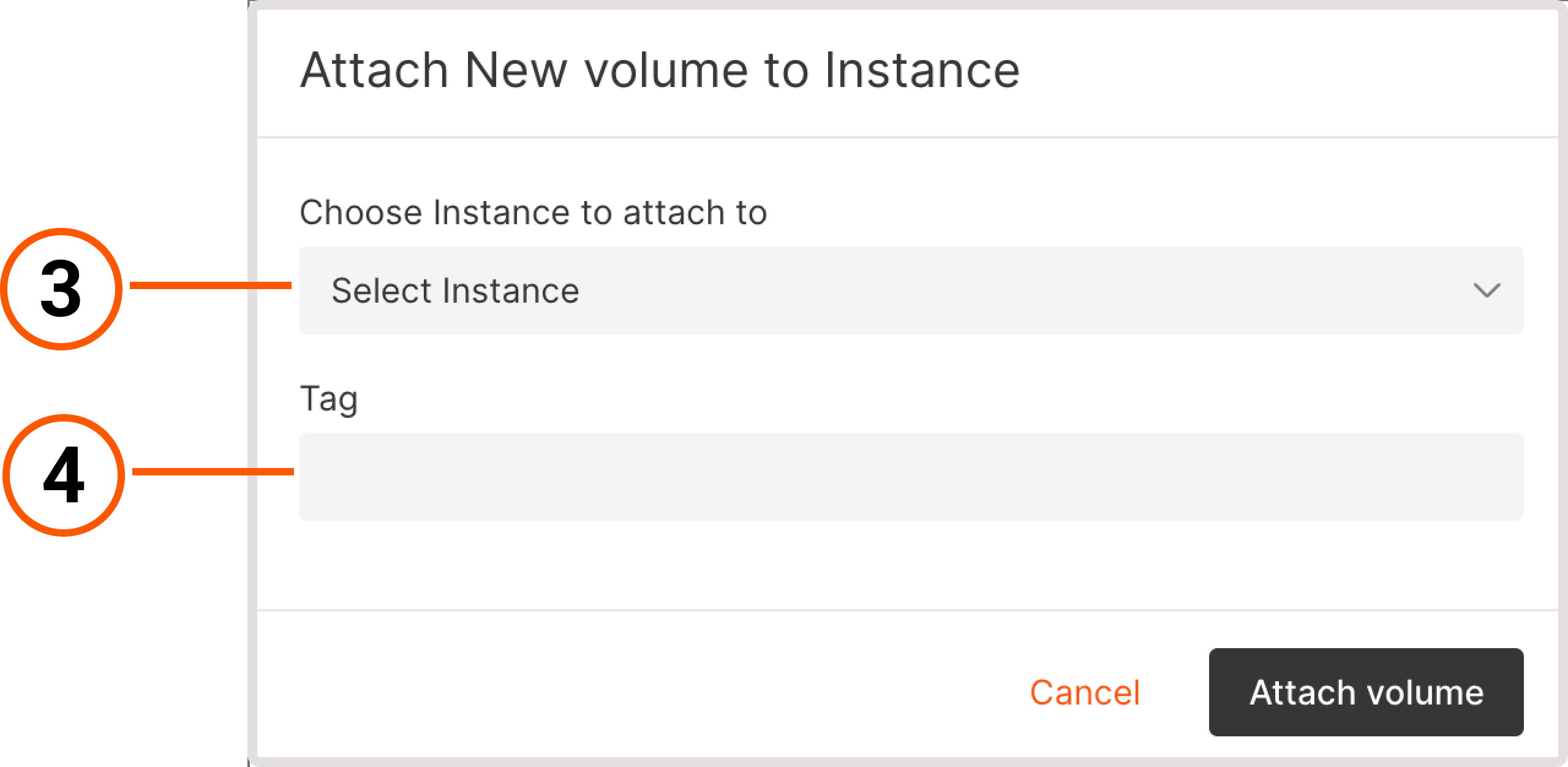


Manage volumes
The options for managing volumes differ depending on the volume you want to modify: boot or regular. If you have a large number of volumes, you can also search for volumes by name or UUID values to find the one you need.Rename a volume
You can rename both boot and regular volumes: 1. In the Gcore Customer Portal, navigate to Cloud > Storage. 2. Click the three-dot icon next to the volume you want to rename.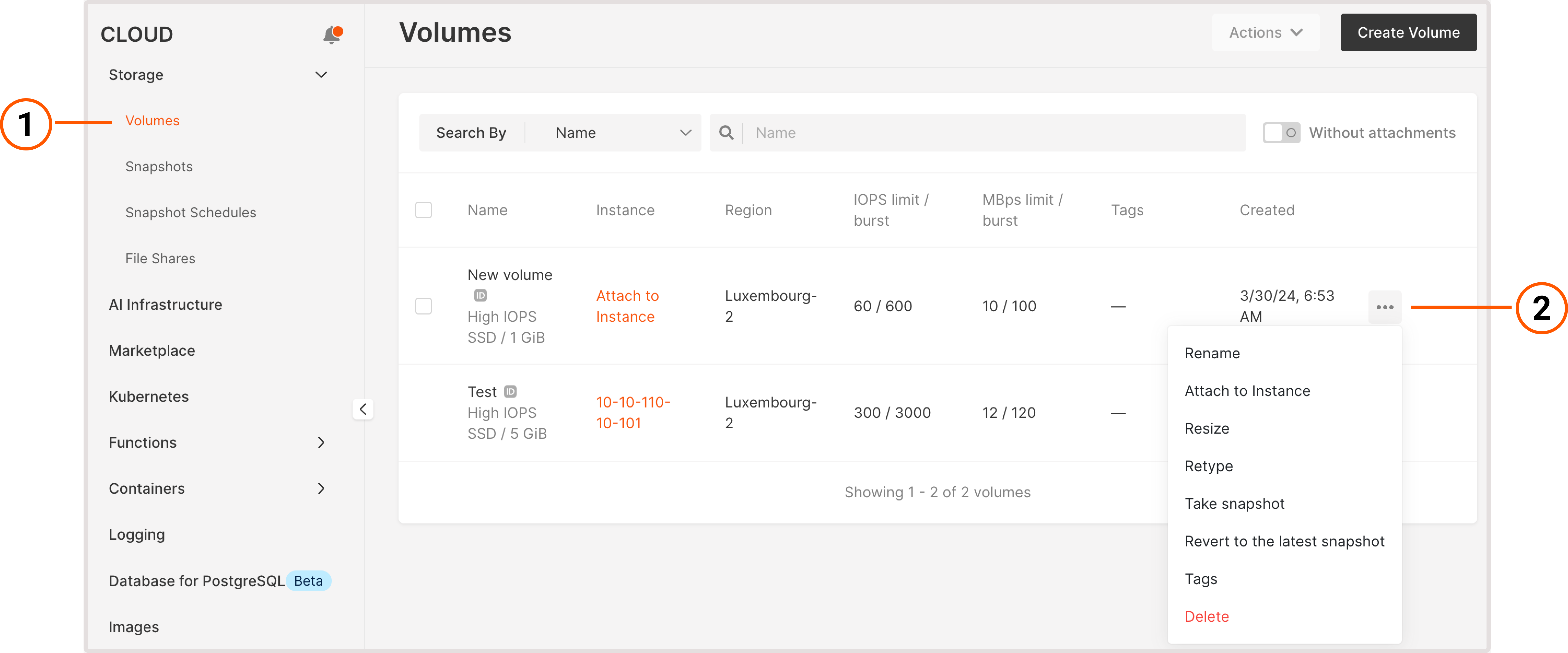
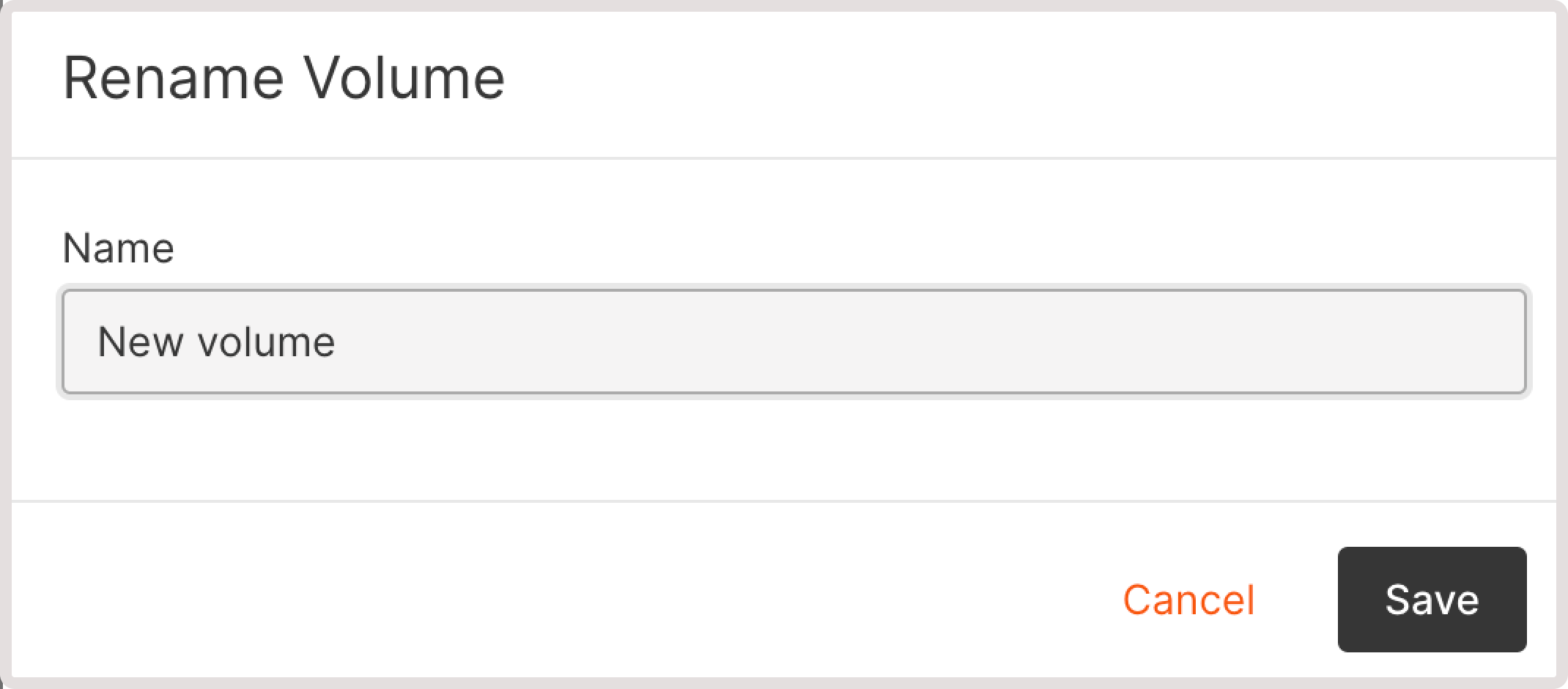
Detach a volume from a Virtual Machine
You can only detach regular volumes. The boot volume cannot be detached from an Virtual Machine as long as the VM exists. If you want to detach a boot volume, you need to delete the VM first. To detach a volume: 1. In the Gcore Customer Portal, navigate to Cloud > Storage. 2. Click the three-dot icon next to the volume you want to detach.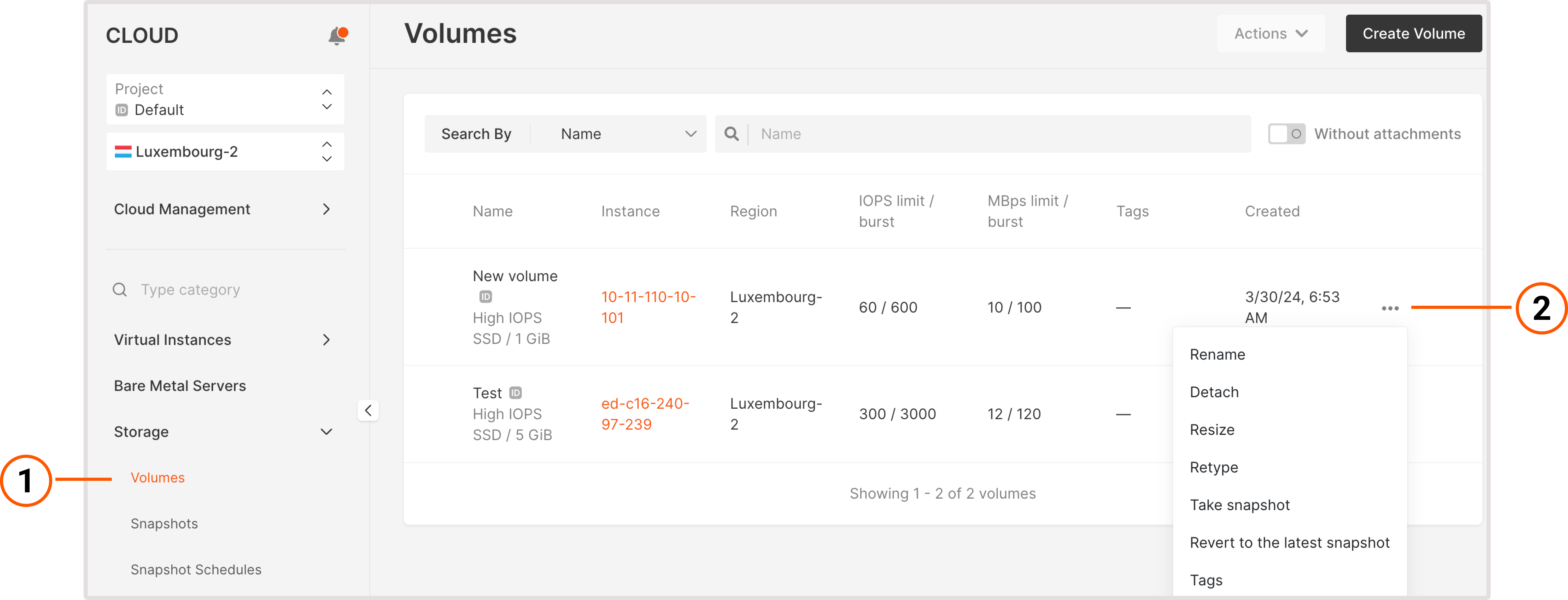
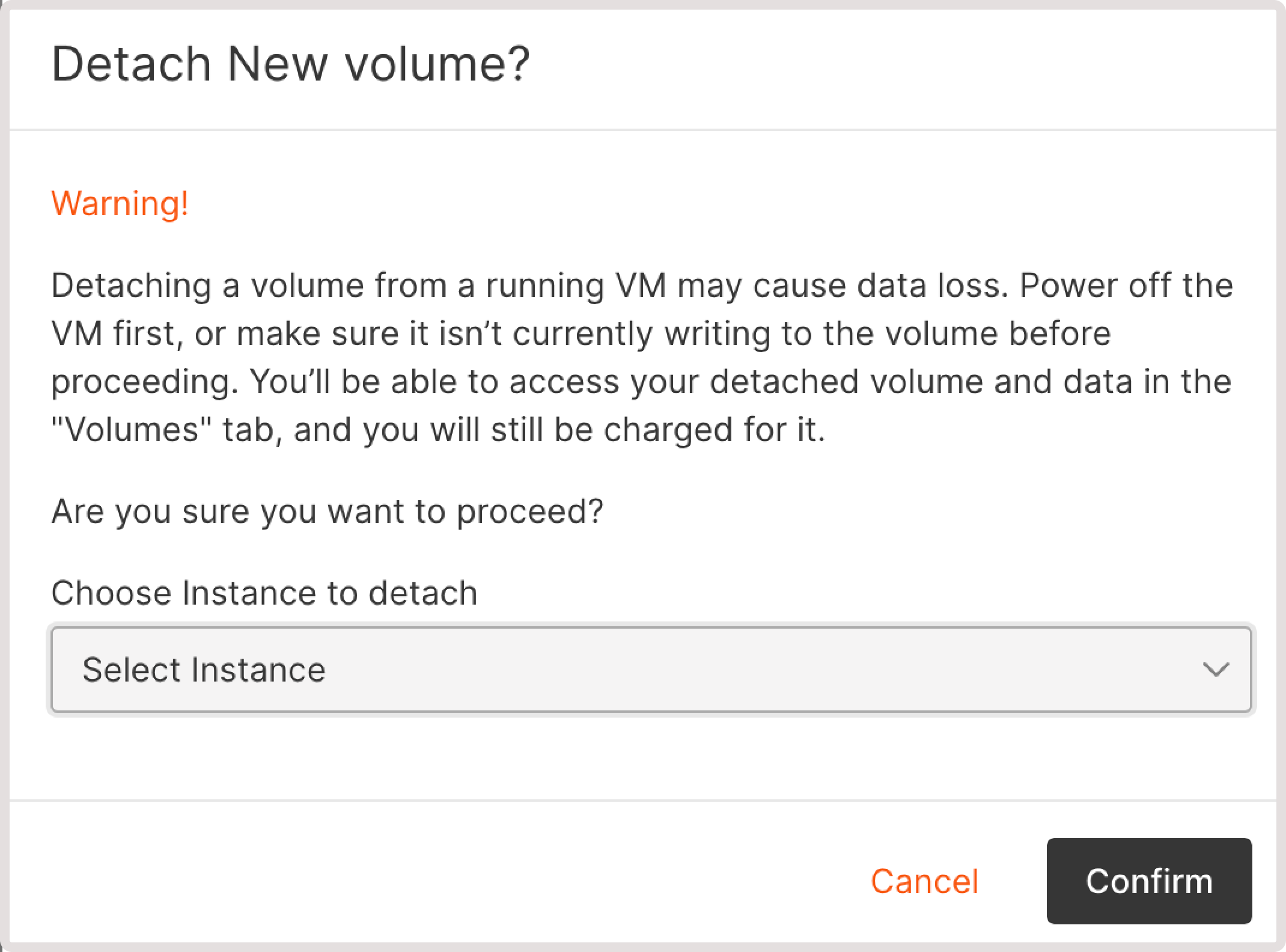
Resize a volume
You can resize both boot and regular volumes: 1. In the Gcore Customer Portal, navigate to Cloud > Storage. 2. Click the three-dot icon next to the volume you want to resize.
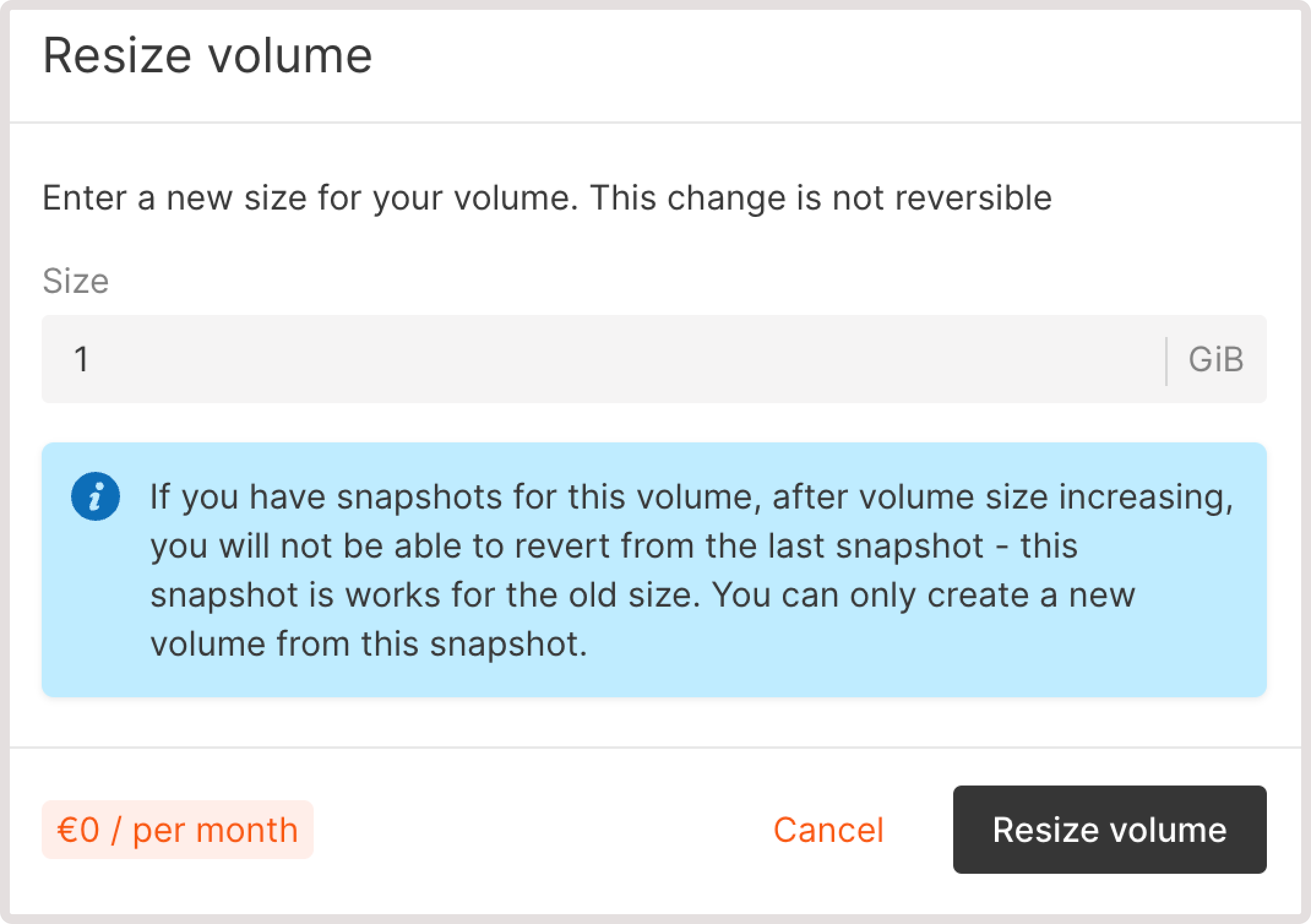
Change volume type
This option is available for regular volumes of High IOPS and Standard types. You can’t change the type of boot volume. However, you can create a new volume from a volume snapshot with the required type.InfoBefore proceeding with the following instructions, make sure that a volume is detached from a Virtual Machine. Otherwise, the Retype button won’t appear in your settings list.

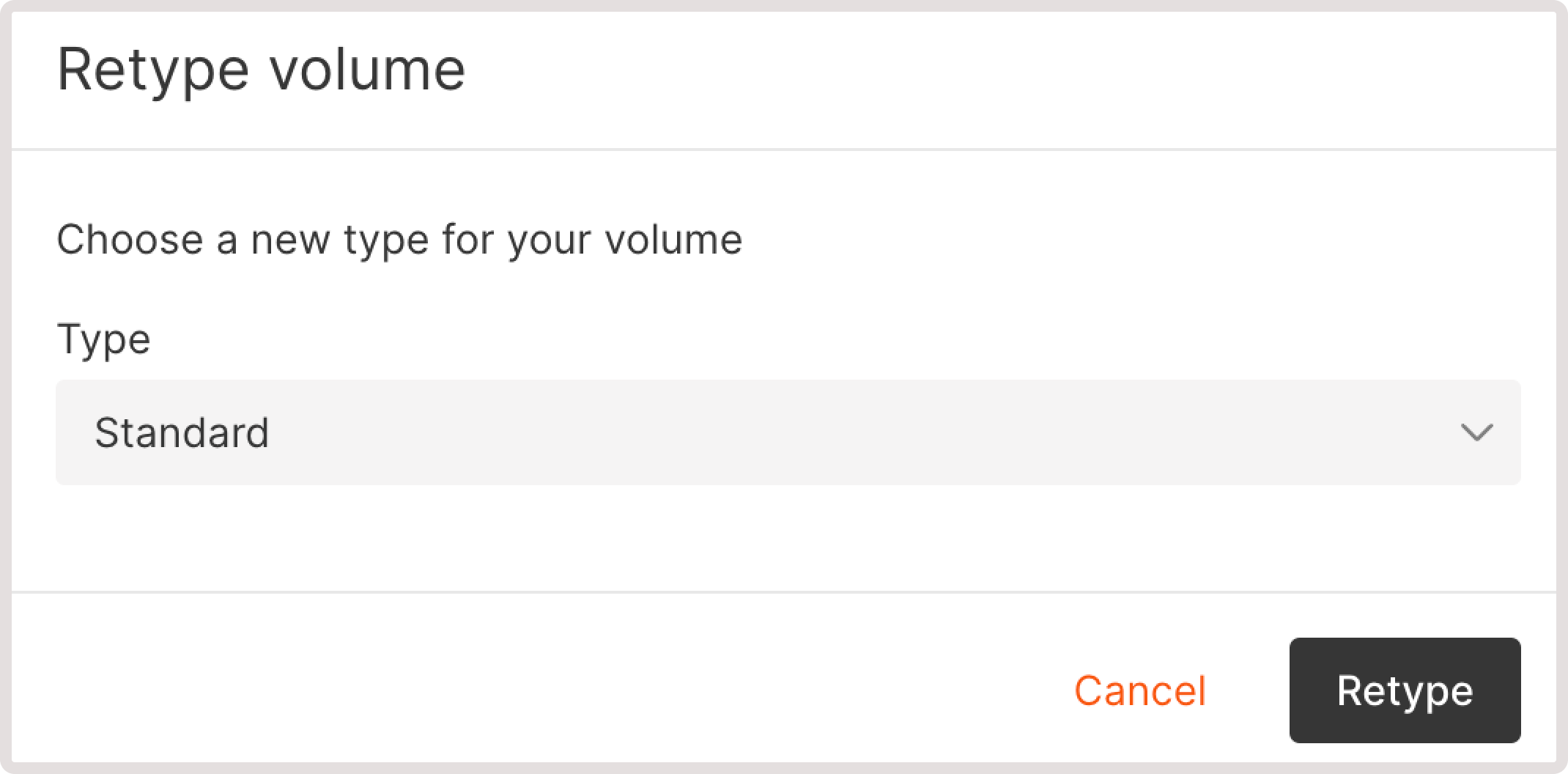
rsync and cp utilities to migrate data between volumes within an operating system.
Take a volume snapshot
You can create a volume snapshot and use it later for backup, further recovery, and deploying new Virtual Machines from snapshots of boot volumes. To take a snapshot: 1. In the Gcore Customer Portal, navigate to Cloud > Storage. 2. Click the three-dot icon next to the needed volume.
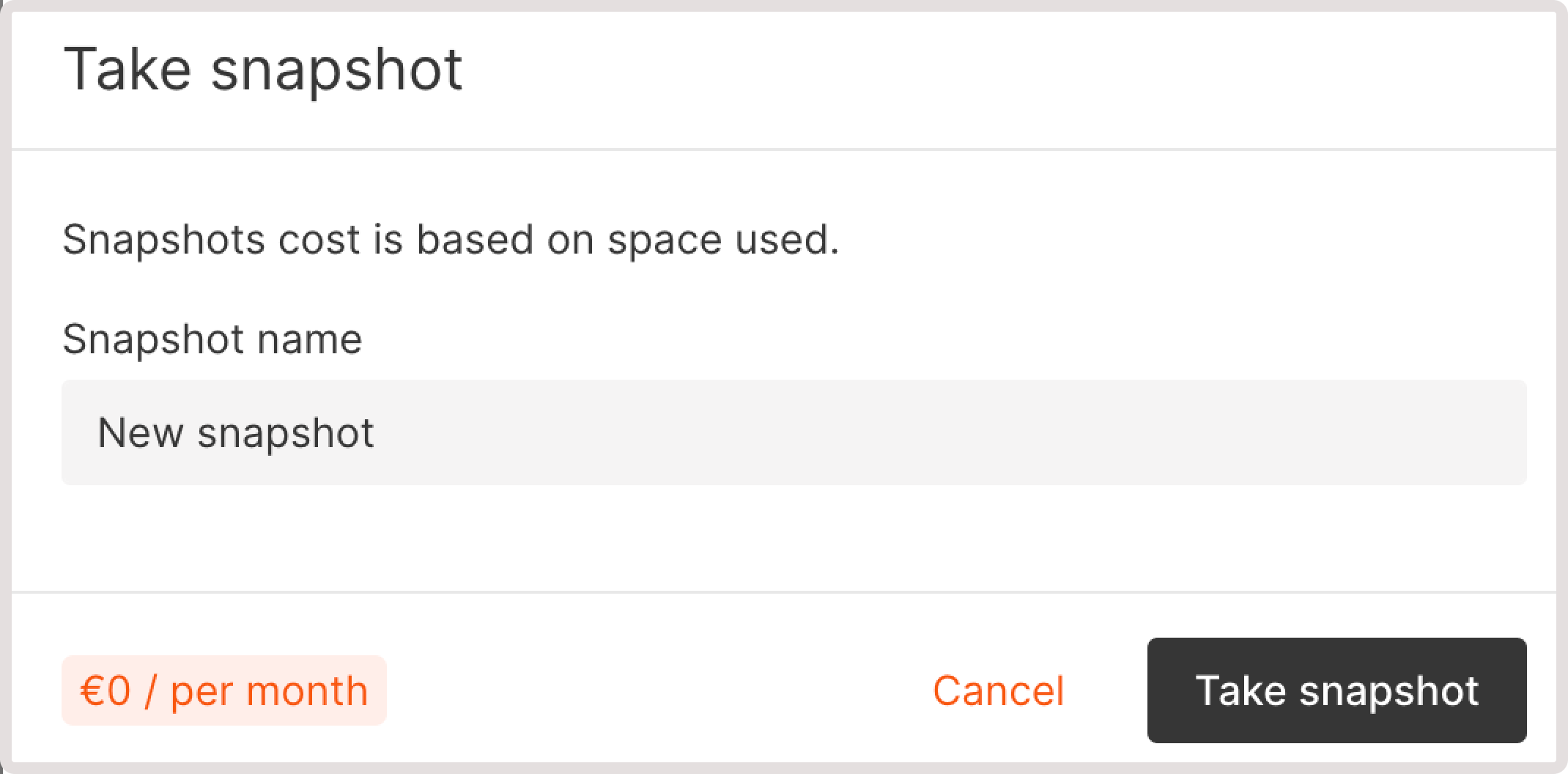
Revert volume to the latest snapshot
In case of an accidental data loss or data corruption, you might need to restore a volume to its previous state. If you made a snapshot of that volume, you can roll your volume back to the state when that snapshot was taken.InfoBefore proceeding with the following instructions, make sure that the volume is detached from an instance and that you have the volume’s snapshot. Otherwise, you’ll get an error when trying to revert the volume to its previous state.

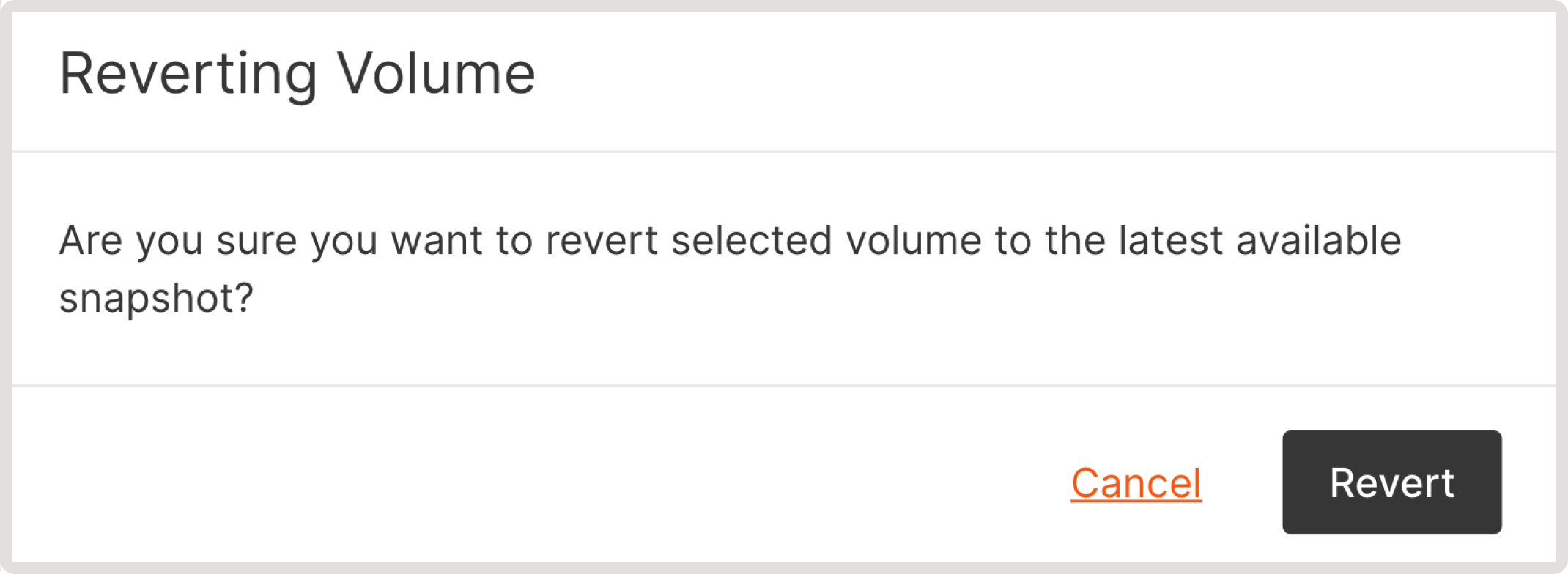
InfoAfter resizing a volume, reversion is unavailable because the latest snapshot is taken for the old size. You can only create a new volume. For the new size, create a new snapshot.
Create an image from a bootable volume
You can create an image from a boot volume and use that image to create a new Virtual Machine. 1. In the Gcore Customer Portal, navigate to Cloud > Storage. 2. Click the three-dot icon next to the volume from which you want to create an image.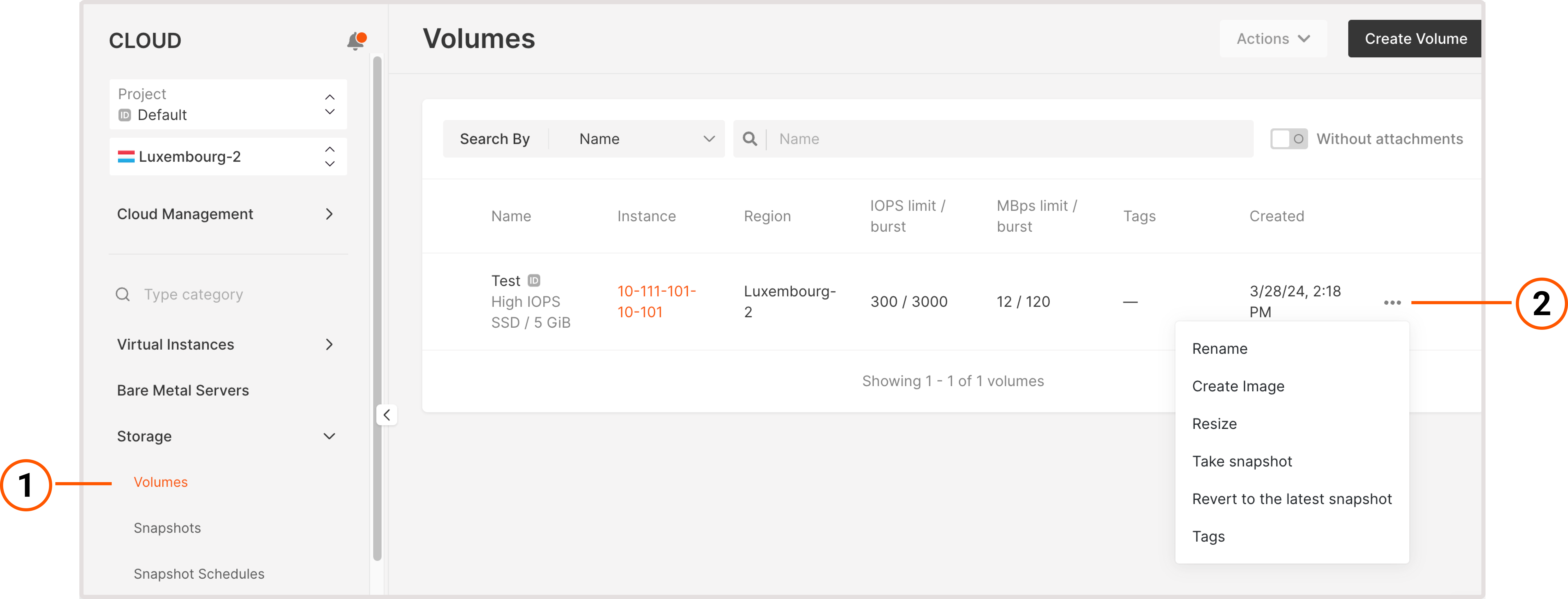

Delete volume
You can delete a regular volume that’s not attached to a Virtual Machine. Boot volumes can only be deleted together with the VM. To delete a volume: 1. In the Gcore Customer Portal, navigate to Cloud > Storage. 2. Click the three-dot icon next to the volume you want to remove.
